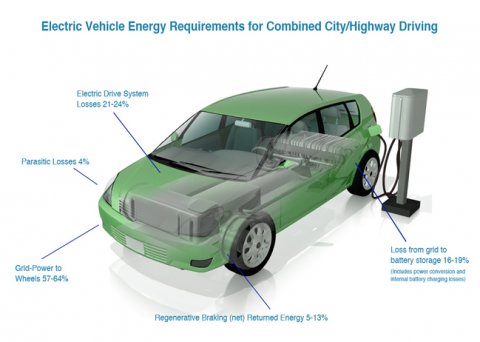The efficiencies of electric vehicles can vary significantly; however, compared with conventional vehicles, they are very efficient—converting about 60% of the energy from the grid to power at the wheels. There are energy losses of about 16–19% from charging and battery storage while electric drive system and parasitic losses combined account for another 25–28%. Off-setting some of these losses, regenerative braking on electric vehicles produces an energy gain of 5–13% resulting in an overall efficiency of about 57–64%. By comparison, a conventional vehicle converts roughly 14–26% of the energy from fuel to power the wheels in the same combined driving cycle.
Supporting Information
| Expenditure Type | Percent |
|---|---|
| Grid Power to Wheels | 57-64% |
| Electric Drive System Loss | 21-24% |
| Grid to Battery Storage Loss | 16-19% |
| Parasitic Loss | 4% |
| Regenerative Braking Gain | 5-13% |
| Sources: Estimated by Oak Ridge National Laboratory using published sources including: Fuel Economy Guide Website, "Electric Vehicles."Fuel Economy Guide Website, "Fuel Economy: Where the Energy Goes." Miller, et.al., SAE 2011-01-0887. Chae et. al., 2011. Gautam et. al., 2011. | |


